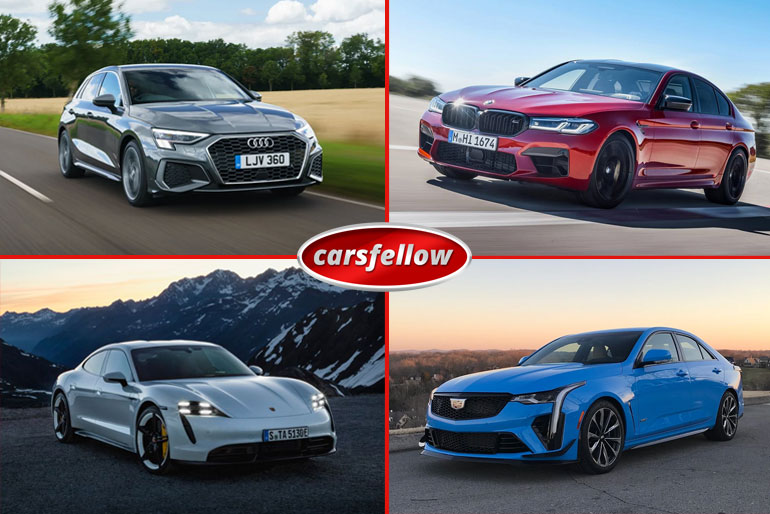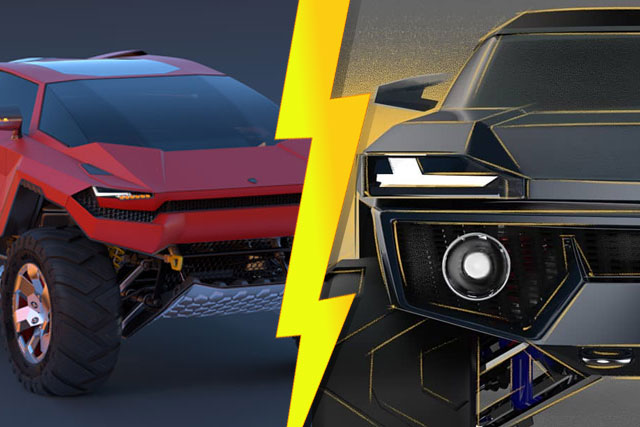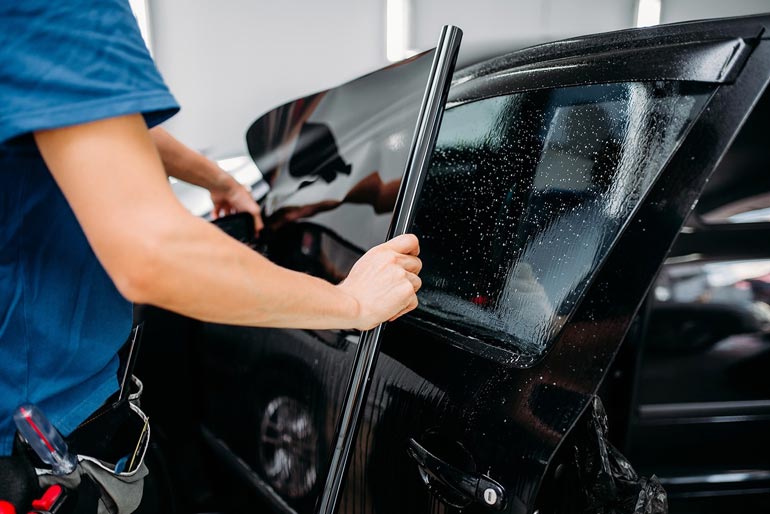Window tints are undeniably stunning at any moment. They improve a car’s aesthetics, while also providing safety features. For starters, it obscures one’s view of the vehicle’s interior while allowing passengers to see the outside world clearly. But that is not all, having a tinted window implies that there is less exposure to ultra-violet (UV) rays – think of it as a light screen. Vehicle occupants will hardly be blinded by the direct sunlight. So, even in the summer, the driver and passengers can go on longer trips without getting sunburned.
Delving into the safety features, a tinted window will not shatter in the event of a car accident, sending fragments of glass flying through the car’s interior room. Rather, it will split but cluster together in severe cases. Even so, an attacker would find it difficult to break the glass due to the added resilience provided by the window tint film. The market is saturated with various tinting options, making it difficult to choose the best fit. Regardless, this guide covers everything there is to know about this incredible technology.
Types of Window Tints
Window tints come in a variety of styles. As a result, a window tint in a Ford Mustang, for example, can vary from one in a Hyundai Sonata, even though they appear to be the same to the untrained eye. Likewise, these products vary based on performance, durability, quality, and price. A professional car detailer will be required to tint a vehicle window using any ideal polyester-based film option.
Dyed Window Tints
Dyed window tints or limo tints are becoming a popular choice among vehicle owners. This tint has one or more layers of non-reflective dye and produces the darkest hue. The top-most layer is coated to protect the framework from scratches. It provides the most privacy while also reducing heat.
However, the car detailer must apply the tints correctly, otherwise, the layers can separate over time, allowing the tint to lose colour and consistency. Likewise, prolonged exposure to UV rays can affect the tint. Hence, car owners should replace their window tints when due.
Metallic Window Tints
Metallic tints feature several layers of microscopic metal particles. They gleam when installed due to their high reflection properties. The tint also comes with improved toughness and durability.
However, the downside to a window tint is that it interferes with GPS and network signals, as well as radio signals. This disadvantage results from the several metal layers used to produce the tint film.
Carbon Window Tints
Carbon window tints come in an appealing matte-like finish. They effectively block heat and UV rays, while allowing unrestricted GPS and mobile phone signal transmission inside the vehicle. These tints feature both dyed and metallic properties and are highly durable, thanks to the presence of carbon molecules. The molecules prevent discoloration.
Ceramic Window Tints
This tint is the most expensive, and there are many explanations for that. Its integral parts comprise several layers of the film made from adhesive nonconductive ceramic particles that are invisible to the human eye, and of course, the third protective layer. It blocks UV rays and heat better than its counterparts. To top it all, ceramic tints don’t affect the quality of mobile signals and GPS.
Benefits of Tinting Car Windows
Tinting car windows come with several benefits as discussed below:
Safety
Drivers and passengers are less exposed to heat and UV rays that may damage the skin. This effect is compounded by the fact that the car window will not shatter to pieces, sending potentially dangerous shards of glass flying in the occupant’s direction. Hence, such circumstances pose little to no risk.
Privacy
A vehicle owner may choose to shield a car’s interior space from prying eyes. Nothing offers this result better than tinted windows. Tint films provide complete discretion, preventing intruders from seeing the features and personal items inside the car, at any given time of the day. Simply put, window tints reduce theft.
Reduced Heat
The heat can be intolerable during summers. However, a car tint can drastically drop such high temperatures over 60%, depending on the tint type. This feature significantly enhances the driving experience. Besides, even if the air-cooling system has not reached the optimum temperature, the occupants can get into the vehicle without having to wait long.
UV Blocker
Car window tints block up to 99% of incoming UV rays, protecting an occupant’s vision and skin. They also eliminate the need for window shades, while offering complete UV protection to the vinyl, seats, and dashboard.
Aesthetics
Due to the enhanced aesthetic function that comes with window tints, cars with tinted windows often look more attractive than their counterparts. Aside from beauty, these products increase a vehicle’s value, depending on the type and quality of tint used. Drivers are advised not to use extremely dark shades for their vehicles.
Potential Risks Associated with Car Window Tinting
While there are advantages to car window tinting, there are also risks to consider. Here are some potential drawbacks of using tints.
Air Bubbles and Discolouration
Over time, cheap or poorly installed tints can cause colour discoloration and air bubbles in windows. It is possible that they will go from dark to purple. Worse still, getting rid of them could be prohibitively expensive. Automobile owners can only use specialist facilities to prevent such outcomes.
Night Vision Impairment
During the day, occupants have an unobstructed view of their surroundings, but this is not the case at night. There is less light during this period. Additionally, drivers can have trouble driving in low-light environments, especially when it is foggy. Road accidents are more likely as a result of these conditions, particularly for drivers who have poor eyesight. Window tinting should be installed in such a way that it does not endanger the driver.
High Auto Insurance
Modifying a car raises the cost of insurance because the owner must notify the insurance provider of such modifications. It is worth noting that specific insurance firms have different insurance policies that govern window tinting. They are worth reviewing to avoid additional fees.
Increased Likelihood of Broken Regulations
State regulations on car window tinting exist. Driving interstate in a vehicle with window tints that do not comply with a state’s regulation is against the law in that state and can attract a penalty. For this reason, car owners should follow the federal and state window tinting laws and regulations.
The Bottom Line:
Car window tints are ideal for any car owner looking for more privacy and safety. They effectively restrict incoming heat and UV rays, protecting the skin and other personal items. As a precaution, drivers should double-check that mounted tints do not severely obstruct their vision in low lighting situations. Similarly, ensure that the tints conform to window tinting regulations. A car detailer is in the best position to install the tints to avoid early discoloration and air bubbles. Car owners can get these products in various shades, material types, designs, and costs.







